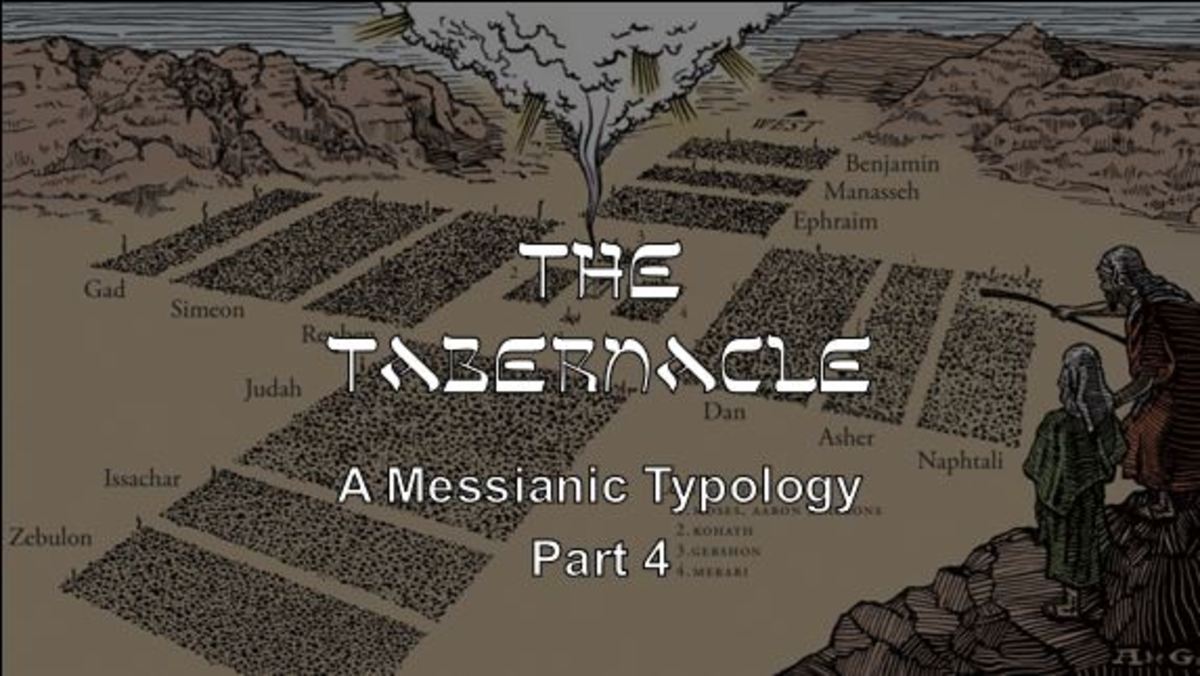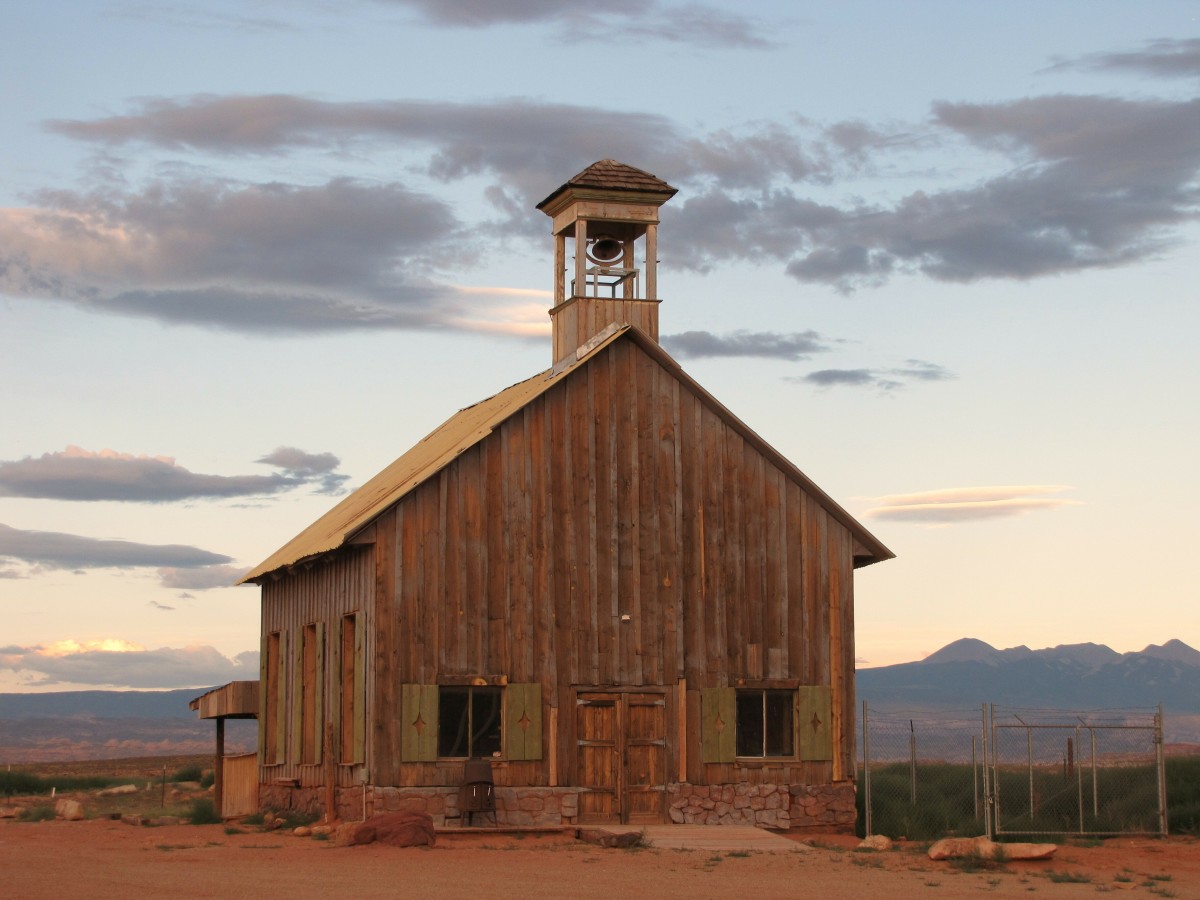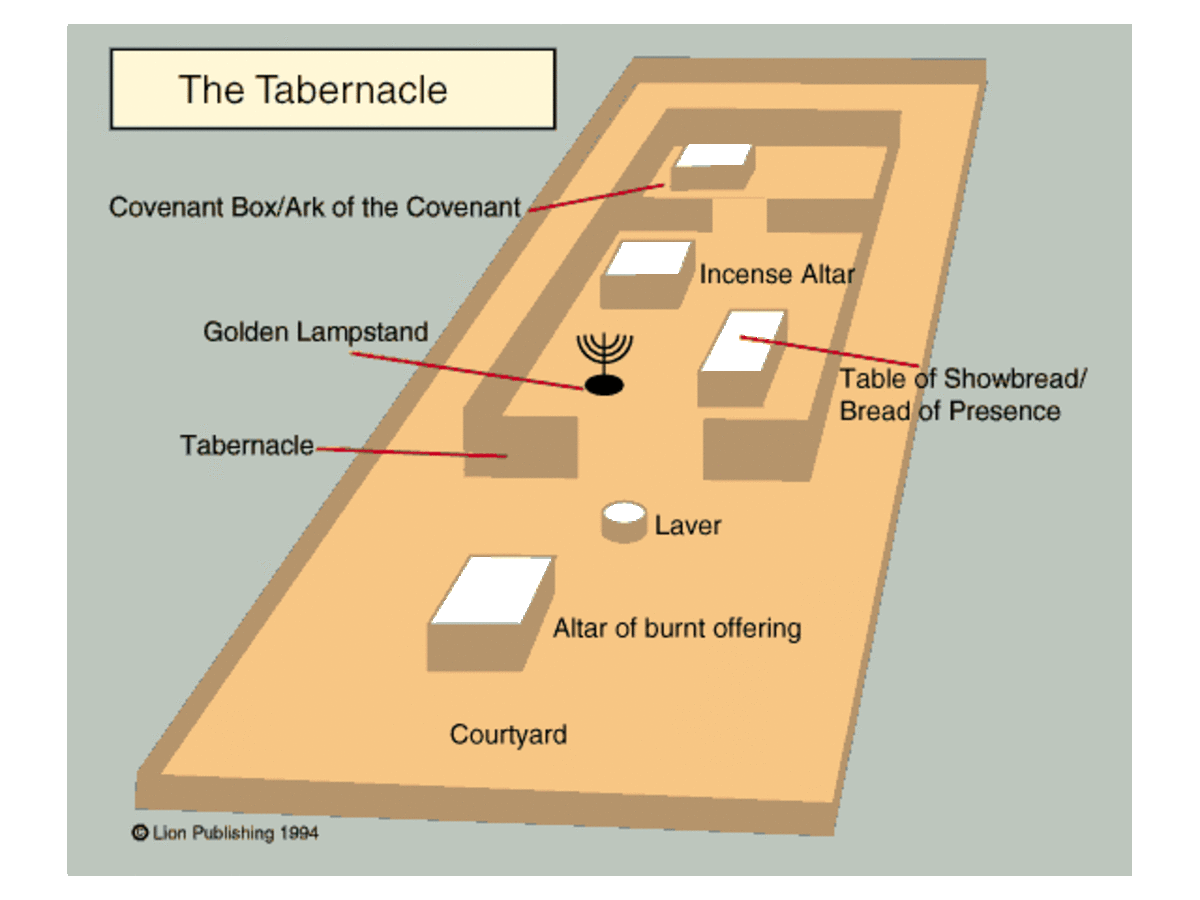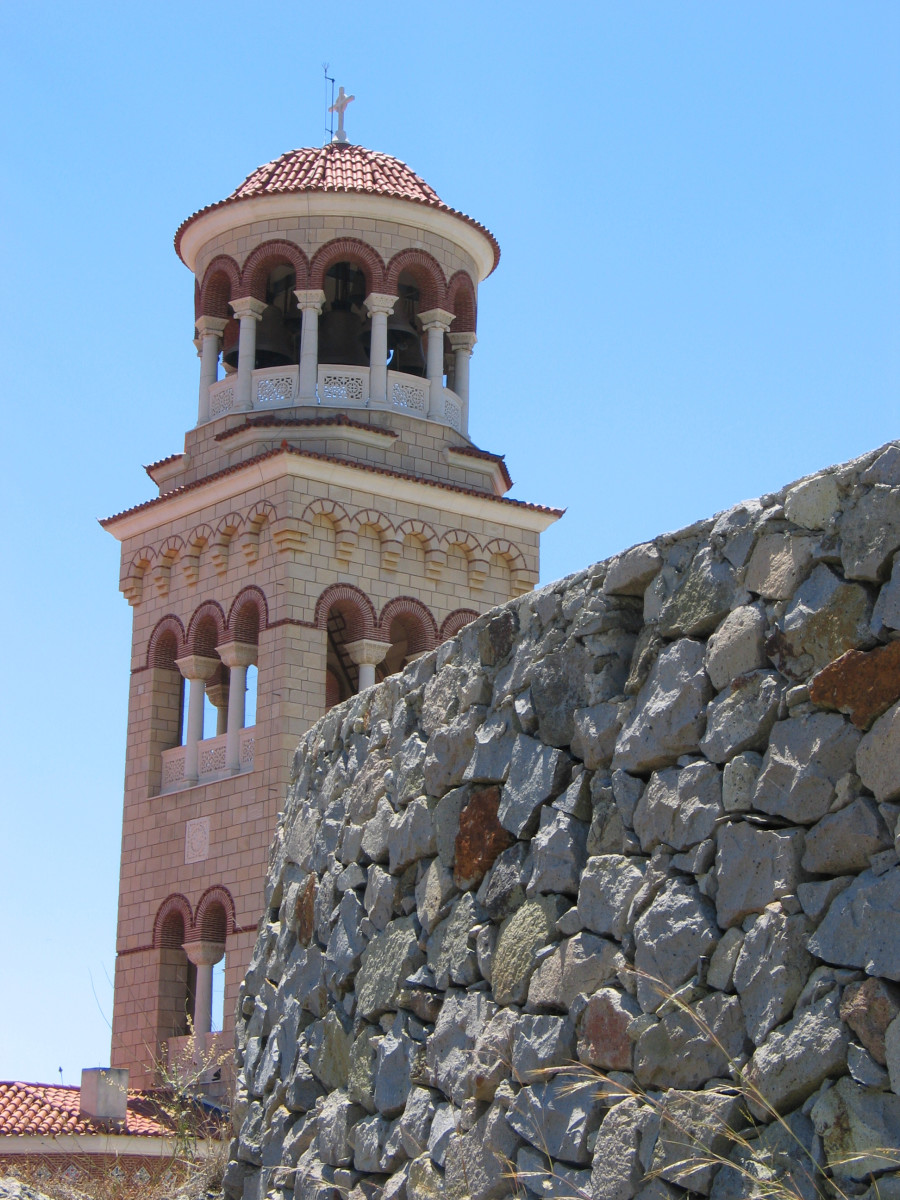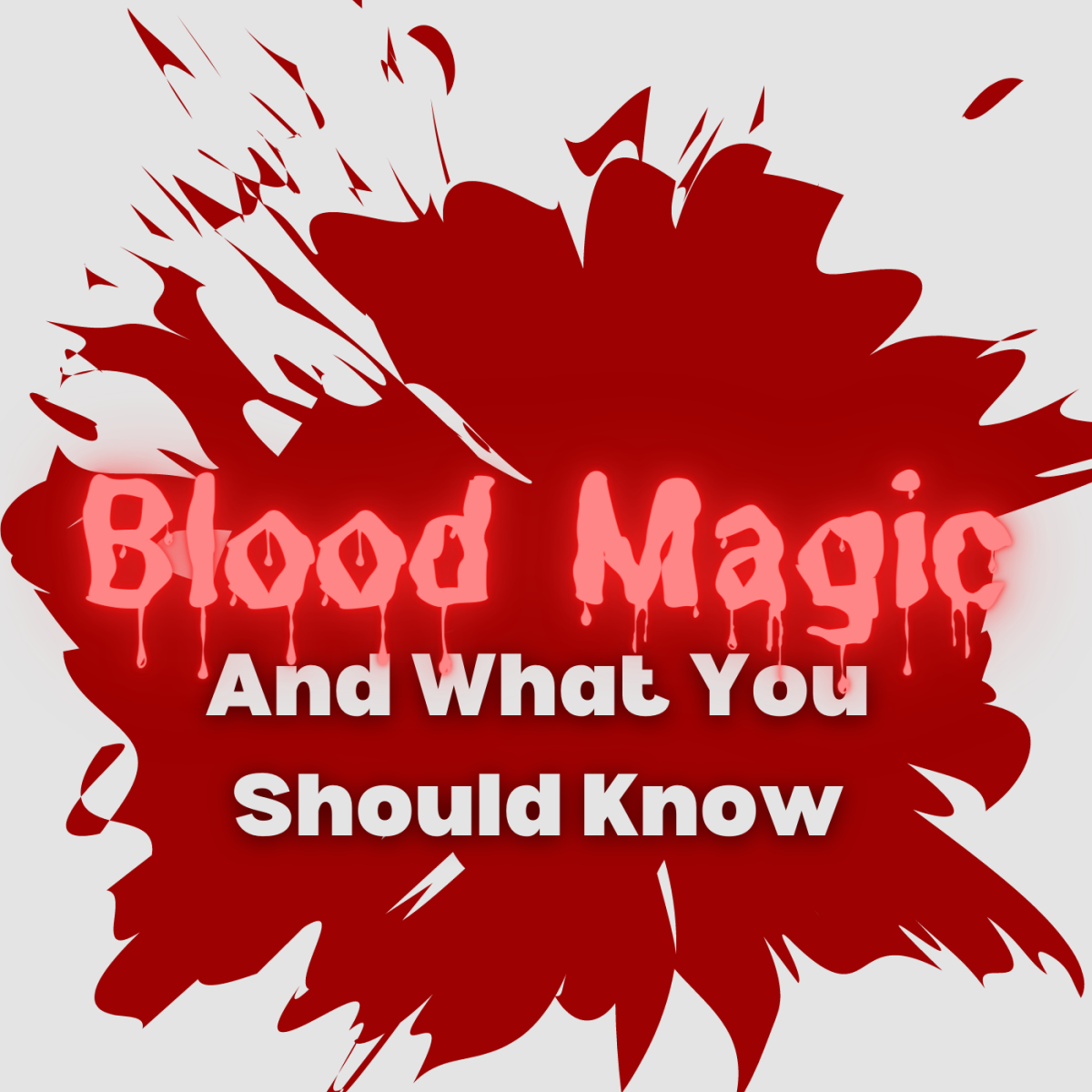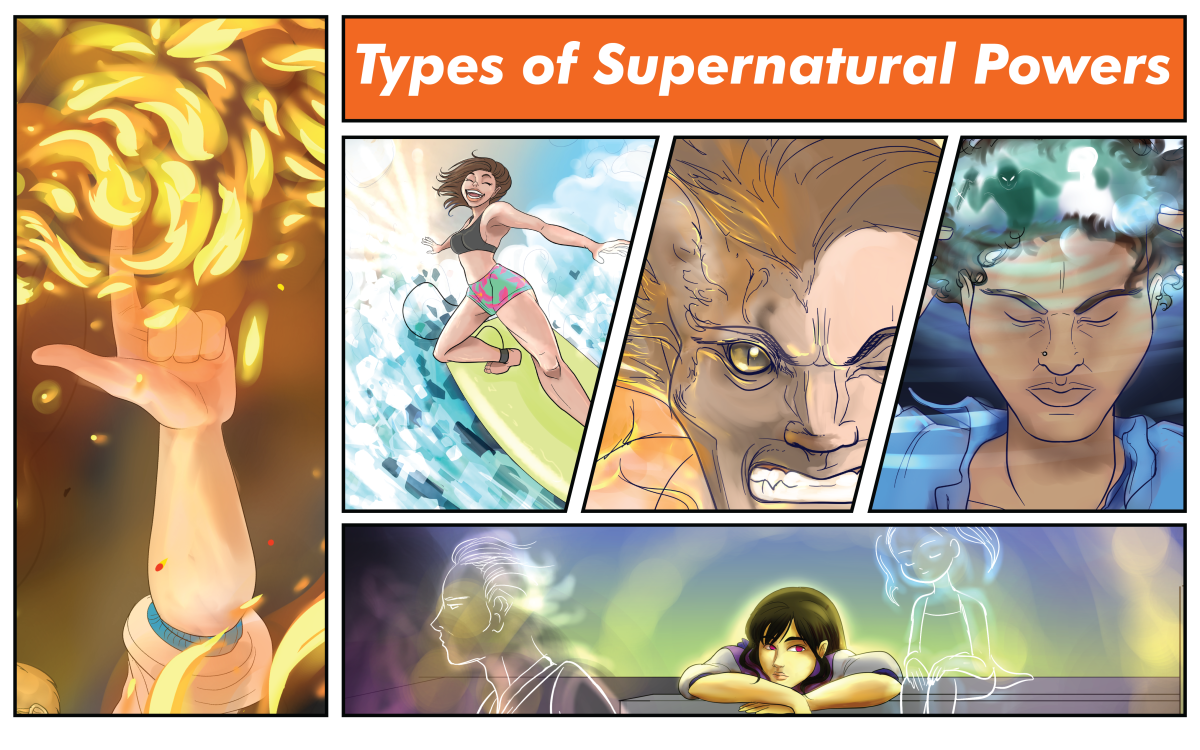The Tabernacle and Typology
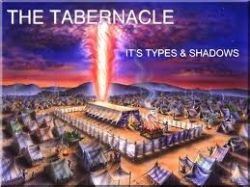
Why I'm making this page about The Tabernacle and Typology
Actually I wonder why I didn't make this page about The Tabernacle and Typology sooner, seeing it is my real Biblical forte, so to speak. The Tabernacle and typology have been the theme of several home Bible classes which I have led. Thus, I developed a syllabus on The Tabernacle and Typology, the gist of which I will now share in this page. The tabernacle is God's great object lesson, with multiple types both of Christ and of the Church. But, really, I'm now making this page about The Tabernacle and Typology because it is a very rich and meaningful as well as practical area of Bible study, which seems to be neglected by many churches and Bible Study groups.
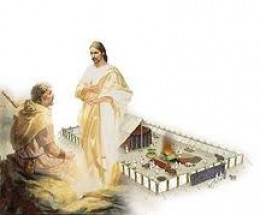
The basis of typological interpritation
Paul tells us in II Tim.2:16 that "all scripture is given by inspiration of God and is profitable...." and in I Cor.10:11 that what happened to the Israelites in the Old Testament "happened to them for ensamples..." The word translated "ensamples in the King James Bible is the Greek word "tupos" from which we get our word "type." So even though what happened in the Old Testament really happened, it was also directed by God to by types for us. The Old Testament is full of types. A Type is a real person place event or thing in the Old Testament which has a Spiritual counterpart (anti-type) in the New Testament. When God told Moses to build the Tabernacle, he told him to make it according to the pattern that he would show him (Exod.25:9, Heb.8:5). Hebrews 8:5 also says that it was a copy and shadow of heavenly things, and in 9:9 it says that it was a "figure" for the time present. So the tabernacle was itself an anti-type of the true tabernacle in heaven. Yet it was also a type of New Testament truths, specifically of Jesus, and as we shall see, also of the Church. The word translated "figure" is the Greek word "parabole" from which we get our word "parable." Jesus told many parables. A parable is an earthly story with a heavenly or spiritual meaning in which each element of the story may represent something spiritual. So in a sense, the tabernacle, though it was a structure, was a parable in that its various parts have different spiritual meanings. The new testament writers and speakers did refer to Old Testament persons, places, events or things as types, the prime example being Jesus himself. He cited Jonah as being a type of Himself in his death and resurrection, for one. And then there is that conversation he had with the two disciples on the road to Emmaus. We are not told the content of it, but Luke records that "Beginning at Moses and the prophets, He expounded unto them the things concerning Himself." What a Bible study that must have been, and I'm sure the tabernacle came in there somewhere.
With a subject as subjective as this, it's always good to see what others have to say on the subject, so read what the early Church fathers had to say about typology in the book listed below.:
Read the fathers on typology:
The unfolding Revelation of the House of God
The purpose of the Tabernacle, according to Exodus 25:8, was that it was to be a dwelling place for God. ("Let them make me a sanctuary that I may dwell among them.") Thus, before we look at the Tabernacle itself, we must trace the house or dwelling place of God in the Bible and see where the tabernacle fits in. This will give us a better understanding of the tabernacle typology.
- A stone with oil poured on it (Genesis 28:10-12)
- A stone with oil and wine poured on it (Genesis 35:9-15)
- A tent, an altar, 12 stones and 2 offerings (Exodus 24:4-5, Hebrews 9:18-21)
- THE TABERNACLE in the Wilderness--God's Revelation of His pattern to Israel (Exodus 25:8)
(SALOMON'S TEMPLE WAS SIMPLY A MORE ELABORATE AND PERMANENT VERSION OF THE TABERNACLE.)
- THE PHYSICAL BODY OF JESUS (John 1:14--the word "dwelt" in the Greek is "tabernacled")
- The Church, a corporate body of both Jews and Gentiles (Ephesians 2:11-22)
- The Temple of the Lord God Almighty and the Lamb (Revelation 21:22 ---God=All in all.)
Applications of Tabernacle Truth
THE TABERNACLE IS:
- A.A pattern of heaven (Hebrews 9:23-24, Ezekiel 28:13-17)
B.A Pattern of the universe (time,Space,Matter)
C.A Pattern of creation (Col.1:17--Atoms)
- A pattern of Man's being (I Thes.5:28)
(Body, Soul, Spirit)
- A commentary on the three feasts of Leviticus 23.
- A. A preview of Christ (John 1:14)
B.An outline of the coming and going of Jesus
C.A pattern of the unfolding revelation of the name of Jesus Christ the Lord,
D.An explanation of Jesus' words in John 14:6 (way, truth, life)
- An outline of God's work of redemption as detailed by Paul in the book of Romans
- A.A pattern of the New Testament Church (Eph.2:20-22, Acts 2:21)
B.An outline of Church History from reformation to consumation
C.A pattern of levels and means of Spiritual development and deliverance.
Application 2 the Being of Man - DICHOTOMY OR TRICHOTOMY (2 or 3 parts) ?
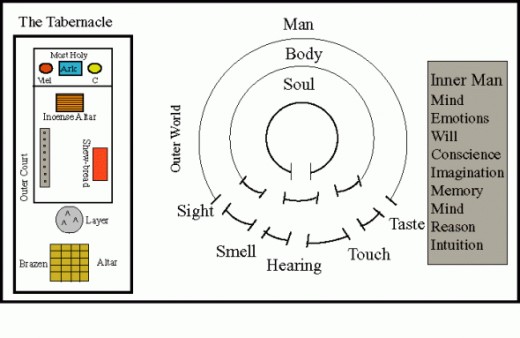
The tabernacle solves the dichotomy vs. trichotomy debate (the debate over whether man is a 2 part or 3 part being). Are humans made up of 2 parts (body and soul or spirit) or 3 parts (body, soul and spirit)? It depends how you look at it. Looking at the tabernacle from the outside, you would say that it has only 2 pats, the outer court and the inner part. But if you go inside, you find that the inner part is also made of of two parts, the holy place and the holy of holies. It's the same with man (or humans). Looking at it one way, we can say that we are made up of the physical part (the body) and the spiritual part, which some may call soul and some spirit. However upon closer observation, we find that the spiritual part is also made up of two parts. Thus Hebrews 4:12 says the word of God divides between soul and spirit. Thus the human being, though seen as a physical and spiritual being is actually made up of three parts: body, soul and spirit. Check out the diagram above. The Holy of Holies in the tabernacle was the part in which God actually dwelt, just as our spirits are the part of us where God dwells by the Holy Spirit (assuming we have already been saved), It's where we communicate with God. Our body is that with which we contact the outside world. And in-between is our soul, determining whether body or spirit will have dominance.
You can see in the diagram of the tabernacle that the holy place also contained 3 pieces of furniture. These relate to the the 3 things which go to make up the soul. These are not shown on the diagram of the soul, but just as the Holy place of the tabernacle has 3 pieces of furniture, the table of shewbread, the lampstand and altar of incense, so the soul has 3 parts or functions, the will, the mind and the emotions. The table was the display center of the holy place, so the will is the display center of the soul. The lampstand was the light of the holy place, so the mind is the light of the soul. The incense altar was the worship center of holy place, so the emotions are the worship center of the soul. And we are told in Col.3:2 to set our emotions on things above.
Tabernacle Typology
I will simply list here some of the typology of some of the materials, colors and furniture of the tabernacle with reference verses so you can check it out in your Bible. Then go through Exodus 25 to 40 where it describes the tabernacle and the priesthood and see what insights you can draw for yourself.
- Gold=Divine character (Exod.28:35, Job 33:10, Lam.4:1-2, IPeter 1:7, Rev.3:17-18, 4:4)
- Silver = Redempion (Gen.37:26-28m Kev,5:15, 27:3, Numb.3:50, I kings 20:39, Ps 68:30b Hosea 3:2a IPeter 1:18
- Brass=judgement or Divine inspection (Numb.21:6-9, Judges 16:21, Daniel 7:19, Is.48:4 Ezek.40:3, Rev.1:15, 18, IKings 25:7
- Wood=humanity (I chron.16:33, Ps 83:23, Ps 45:7, Zech 12:6)
- Oil=The Holy Spirit (I Sam.16:13, Ps.45:7, Zech.4, Matt.25:1-9
- The blood=the blood of Jesus (Heb.9:13-14
- The offerings=various aspects of Jesus, the lamb of God and His perfect sacrifice (Heb.10:14, Lev.10:8) They also typify a ladder from God to man to God.
- Blue=heavenly
- purple=mixture of red and blue=the incarnation
- Red=manliness and sacrifice (Lev.14:4-7, Numb.19:5)
Here's a handy handbook for studying the tabernacle:
The outer court of the tabernacle
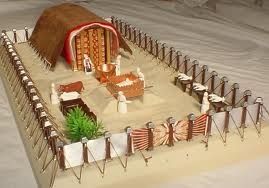
In the outer court of the tabernacle, everything was brass, which, as we saw, represents judgement.
The first thing you see after you enter is the brazen (brass) altar of sacrifice. This represents calvary where Jesus sacrificed His life for us.
Going further, you see the brazen (or brass) laver (or washing basin) where the priests would wash their hands and feet. It represents the word of God in its judging (brass) and cleansing (water) aspects.
The resource listed below consists of Five lectures given at the European Theosophical Society August 1895. Contents: Purification; Thought Control; Building of Character; Spiritual Alchemy; On the Threshold
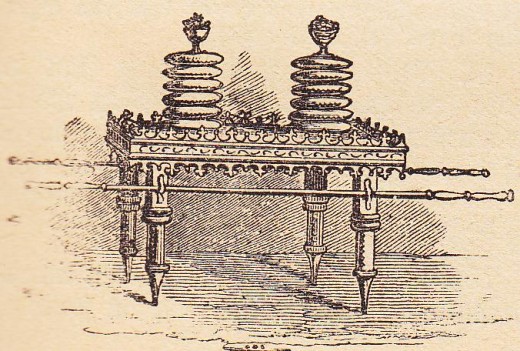
The Holy Place and the table of shewbread:
Coming through the outer court, you then pass through the 2nd of 3 veils or gates all which have the same 3 colors representing the incarnation of Jesus, thus indicating that the only way to come to God is through Him. In the Holy place, everything is gold, representing Divinity, or coming into Divine character. The first thing we see is the table of Shewbread, which is wood overlayed with gold, representing humanity overlayed with gold. In addition to picturing Christ in his two natures, We said the table represents the human will, so a human will overlayed with Divine will. On the table are displayed 12 loaves. The number 12 is the number of Divine order. There were 12 for the 12 tribes of Israel, but now they represent the 12 apostles and thus the Church.
The Lampstand:
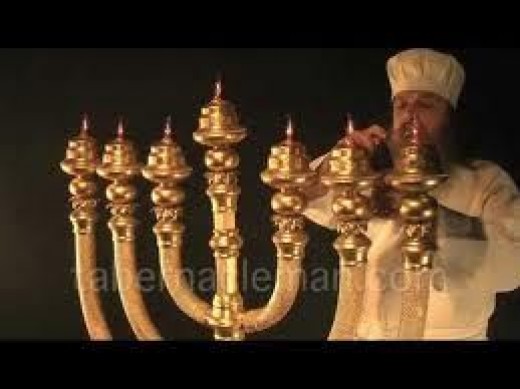
The Holy place continued:
Next we notice the lampstand, which gives light to the Holy Place. The lampstand is pure gold and as such represents the pure mind of Christ but also our renewed mind in Christ (I Cor.2:16). It also represents the light of our testimony. Oil is needed to light it. Our mind and our testimony is lit by the Holy Spirit upon salvation (Eph.1:18) in the inside part. But in Zech.4, it is outside because of the darkness of the world around (Eph.4:18, 5:14, II Thes.5:4-7. Jesus told us to let our lights shine. The lampstand has 7 branches, a center branch and 3 on each side. This represents that He is the vine and we the branches. He is the center shaft and we the 6 branches.
The Incense Altar
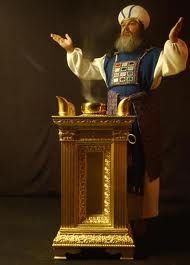
The Holy Place continued:
The final object in the Holy Place is the golden altar of incense. Like the table, it too is wood overlayed with gold, thus representing, in addition to the two natures of Christ, our human emotions overlayed with Divine emotions. It was 4-square (Ex.30:2) representing stability.
On it was to be burned sweet incense day and night. This represents prayer and praise which Christ is now offering up for us as he intercedes in heaven and which we should offer up to God here day and night. (Exod.30:8--Ps.141:2)
Read more on the altar of incense:

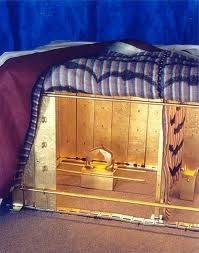
The Holiest of all and the Ark:
Only the priests were allowed to enter the Holy place and only high priest was allowed to enter the holiest of all and only once a year on the day of atonement. Passing through the final curtain, he would see the Ark of the covenant with the cherubim above the mercy seat and the Shina presence of God. He would have to bring incense from the incense altar, indicating that we are to come before God's presence with praise. The ark also was of wood, but it was overlayed with gold within and without indicating a human spirit overlay ed with the Divine spirit inside and outside. There is much I could say about the contents of the ark. According to Hebrews chapter 9, it contained 3 things: (1)The broken tablets of the law, which Moses broke when he saw the people sinning, (2) A pot of manna, which they ate in the wilderness and complained about, and which represents fellowship with God and (3) Aaron's rod which budded, as a sign of his authority in answer to the rebellion of Korah. Once a year on the day of Atonement, the high priest would go in and sprinkle the blood of the sacrifice over the mercy seat which covered the ark. Thus, God saw the broken law, the broken fellowship and the rebellion all through the blood, as he now see our sin and rebellion through the blood of Jesus if we accept His sacrifice. This should be enough to get you started on your own in-depth study of the tabernacle. OR check out the Kindle eBook below. May God bless.
Application 4: The tabernacle pre-figures Jesus (John1:14)
I have already hinted at the fact that the tabernacle pre-figures or points forward to Christ. This is the 4th application of tabernacle in the list above. It would take a lot of space to go into this application, but you can study it out for yourself, verse by verse, by getting the reference great below. Arthur Pink is an excellent reformed Bible scholar and I have used his book, "Gleanings in Exodus" in my Bible classes. I highly recommend this work. You'll be amazed at some of the applications he comes up with, but they all make great sense and he often brings in other scriptures for support.
Arthur Pink gives some excellent examples of how the tabernacle pictures Christ.
This site is listed in these directories:
Access By Faith, Christ Centered Web - Directory, Free Website Directory, and in Sermons Outlines, Free Pentecostal Bible Studies, Topical Sermons, Podcasts - Sowing Seeds of faith by Ken Birks.







